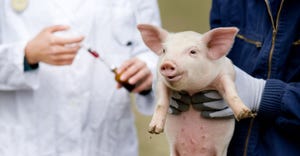Evaluation of sub-therapeutic growth promotion antibiotic alternatives
There is still a need to understand the mechanisms of how sub-therapeutic growth promoting antibiotics improve growth performance so we can mimic these actions with alternative products.
March 29, 2017
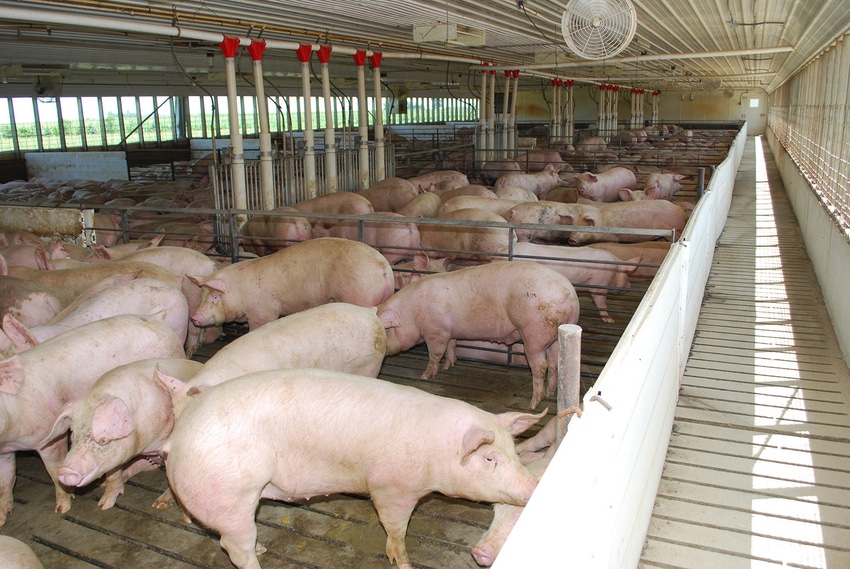
By Wes Schweer and Nicholas Gabler, Iowa State University Department of Animal Science
Antibiotics have been used in animal feed for about 50 years with significant impacts on pig performance and health. With the induction of the Veterinary Feed Directive, the use of sub-therapeutic antibiotics for growth promotion in swine production has been illegalized. However, therapeutic use for treating clinically sick animals, preventing or reducing the incidence of infectious disease agents requires judicious use under veterinary oversight. These changes have been brought about by public pressure, increasing number of retailers announcing intent to acquire pork that has been produced with no or restricted antibiotic usage, and general concerns about antibiotic resistance. Consequently, pork producer needs are acute and time-sensitive to seek alternatives to AGPs that will enable them to recapture the pig performance lost in the absence of sub-therapeutic antibiotics use.
Interestingly, the mode of action by which AGPs promote performance benefits is still not clear. However, optimal animal health and performance depends on host and microbial attributes and two functional modes of action have been proposed. First, indirect effects through the microbiota in which AGPs may function by altering the composition of the microbiota to reduce competition for nutrients and/or by reducing pathogen load (bacteria-centric hypothesis). Second, via direct effects on the host by acting as direct immunomodulatory agents that allow for resources to be shifted to metabolic functions (i.e. host-centric hypotheses). Both functional modes of action are being targeted by allied industry companies to find AGP alternatives.
The complexity of AGP alternatives creates some challenges in designing and conducting experiments that will provide meaningful and repeatable results. For example, when AGP alternatives are being evaluated, it is important to know the age, health status of the pigs, the conditions under which they are raised, the composition of the diet, etc. When this information is not provided, it is difficult to interpret results and even more difficult to compare results across studies and locations. Most critically, it is difficult to translate the results to commercial conditions, which themselves often vary widely in health status and stocking density. The developing standardized reporting approaches and designing testing protocols for better interpretation across studies will ensure efficient knowledge transfer to producers. Producers will benefit by having data which they can interpret in the context of their own farming operations.
To address this, the National Pork Board Checkoff program has funded a project involving collaboration between Iowa State University and the USDA National Animal Disease Center for the development and validation of effective research protocols for AGP alternatives. This multidisciplinary team of researchers includes expertise in nutrition (Wes Schweer, Kristin Hansen, Nicholas Gabler and John Patience), microbiology (Heather Allen), immunology (Crystal Loving), veterinary diagnostics and veterinary field services (Daniel Linhares, Chris Rademacher, Alejandro Ramirez and Kent Schwartz). The goal of this work is to provide pig producers and the allied industries with tools to enable them to enhance the development and implementation of successful AGP alternatives in nursery pig diets. The first part (Stage 1) of this work is being summarized herein, in which we are evaluating the plethora of published research articles regarding AGP alternatives for descriptive efficacy on pig growth rates, feed intake and feed efficiency and their ability to reduce mortality. The second stage is to develop, test and validate protocols for assessing AGP alternatives.
In Stage 1, the literature review seeks to identify and develop the essential components of antibiotic alternative studies to ensure that progress is achieved in a timely fashion and to identify effective alternatives to in-feed antibiotics as quickly as possible. AGP alternatives may include vaccines, modulation of the gut microbiota (e.g. direct-fed microbials [DFM], prebiotics [fiber and starches], organic acid, phytogenic, etc.), bacteriophage (phage) therapy, and modification of diet composition such as animal plasma and micronutrients. Modulation of these dietary components has shown varying efficacy on pig performance due to great diversity in factors such as study designs, housing conditions, pig health and genetics. Therefore, over the last year we conducted a literature review of AGP alternatives to determine the extent to which these factors influenced study outcomes.
We defined a set of AGP alternative categories (Table 1) that are commonly used in swine diets which included: DFMs, prebiotics, resistant starch/fiber, botanical extracts, organic acids, lysozymes, oligosaccharides, yeast and micronutrients (zinc and copper). We acknowledge that some of these categories overlap, but for each of these categories a literature search was performed using five different research databases (Pubmed, CAB Abstract, Agricola, ScienceDirect and Web of Science). All papers returned from these searches were compiled into a citation manager program. From here we determined that papers from 1990 to the present (2016) were the most suitable for relating to today’s pig industry (i.e. genetic and production relevance). Because improving growth performance, feed efficiency and reducing mortality is of the utmost importance to swine producers, research articles selected must have contained some performance (ADG, ADFI, feed efficiency) or mortality data. Articles that provided this information were accepted for the review. Duplicate articles were removed and all articles had to have been peer-reviewed, original research (not review articles) and in English. Once this criteria was met, all papers were read and data extracted.
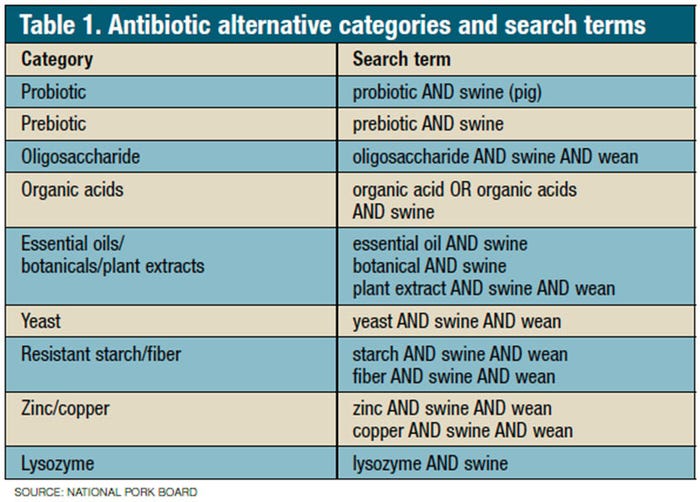
These data included: number/treatment, pigs/pen, age of pig, duration of study, start bodyweight, dietary components, disease challenge (yes/no), and if performance (ADG, ADFI, feed efficiency) or morality was significantly modulated in a positive or negative manner or not changed. If data was not in the report, this was also reported. The search reviewed 23,700 research articles, but only 830 research articles met our stringent criteria (Figure 1). We collected data from these articles and because some articles had more than one study per article or more than one AGP alternative treatment, we evaluated 2,034 trials from the 830 articles. All these extracted data was compiled in an Excel database in pivot tables for evaluation. This database will be available through the National Pork Board in mid-2017.
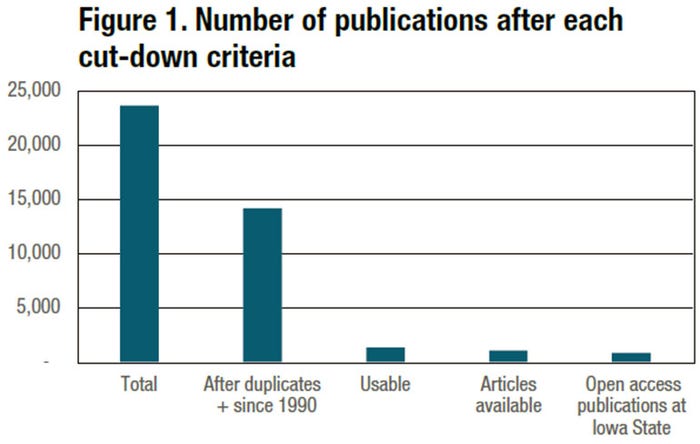
Our initial descriptive evaluation of nursery pig research studies highlights that overall, using a single or combination of AGP alternatives improved ADG in 28.6% of the trials, while growth performance was unchanged or reduced in 66.5% and 3.3% of trials, respectively (Figure 2). Breaking down the categories, the most effective AGP alternative for improving ADG were DFM, zinc and/or copper and organic acids in which 39.9%, 39.2% and 31.2% of trials reported a significant improvement in ADG, respectively (Figure 2). Similar data were collected for ADFI (Figure 3), feed efficiency (Figure 4) and mortality (Figure 5). For ADFI, overall 14.3% of trials reported significant improvements and zinc and/or copper was the most effective category (24% positive responses). Feed efficiency improvements occurred 17.3% of the time in all AGP alternative trials evaluated with lysozyme use being the most beneficial (33.3% of the nine studies evaluated). Across all trials, mortality was largely unreported, with less than 10% of the 2,034 trials reporting mortality. However, of the reportable trials, organic acids reduced mortality in nursery pigs the most (Figure 5).
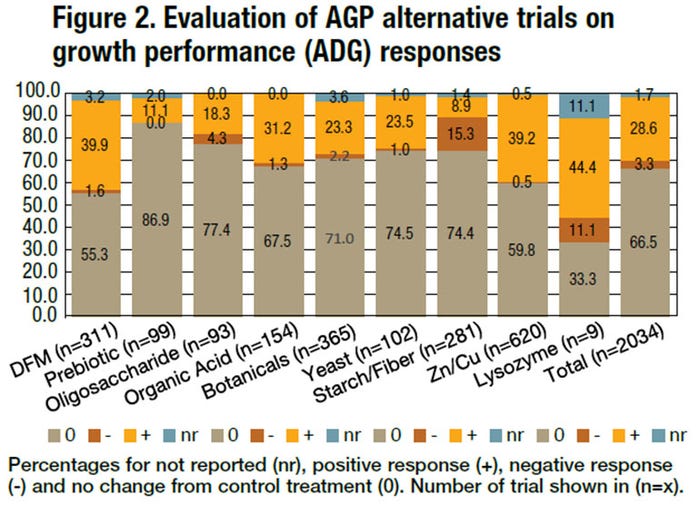
Evaluating trends within each category for what might be responsible for the reported outcome variable was also conducted. Overall, genetic background of the pigs used across studies and the base diets (corn-soybean, wheat, etc.) did not appear to contribute to the variable responses of using AGP alternatives. However, this needs further evaluation. Within the DFM category, we evaluated if certain microbial strains were more effective at improving ADG. Of the 124 trials that had improved ADG with DFM inclusion, 29.8% fed a combination of different strains, 24% used a Lactobacillus species, 16% utilized a Bacillus species and 14% fed an Enterococcus species of DFM. Similar trends were noticed for improvement in feed efficiency, where a strain combination (31%), Bacillus (26%) and Lactobacillus (19%) were most effective.
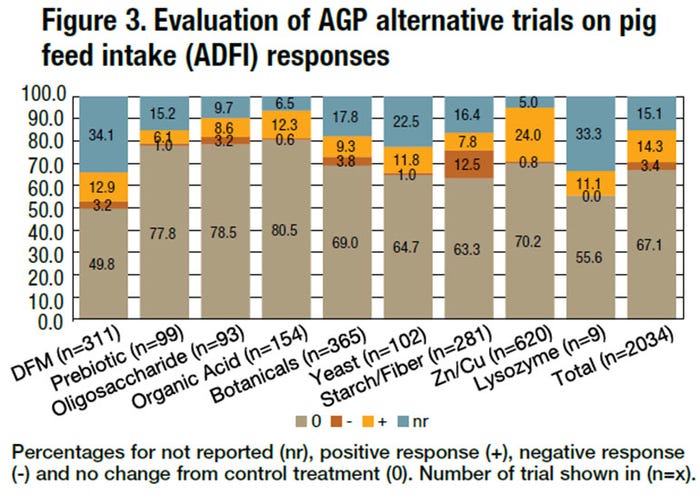
Within the micronutrient category, the use of zinc and copper was evaluated (243 trials reported). Of these trials that reported improved ADG, 63% fed zinc only, 30% fed copper only and 5% fed a combination of zinc and copper. These studies also highlighted the known importance of zinc and copper inclusion rates. Within the 63% of positive responses for zinc only, 17.5% fed zinc at an inclusion rate of 3,000 parts per million, while 11% fed 2,500 ppm. Copper inclusion at 250 ppm represented 20% of copper trials that improved performance. Copper inclusion at 200 ppm (18%) and 125 ppm (18%) was reported in a similar number of copper trials that had positive ADG.
To effectively evaluate AGP alternatives, the age of the pig and experimental power (pen size and number per treatment) could be a major determinate in finding reproducible results. Therefore, we examined our database for patterns in starting bodyweight, feeding duration, number/treatment and pigs/pen to determine if these factors impact the efficacy of AGP alternatives. Again, using the DFM category as an example, the average starting bodyweight of studies that improved performance was 12.8 kilograms, while in studies that decreased performance this was 25.7 kilograms. This pattern suggests that the efficacy of DFM decreases if used in older pigs and later stages of production beyond the nursery. Similar trends were seen in the resistant starch/fiber category, where effective trials used pigs with an average start bodyweight of 6.47 kilograms and when trials started at 12.48 kilograms, performance was reduced. Overall, most of the trials that reported significant improvements in pig performances utilized three to nine pigs per pen and six to 12 replicates per treatment. Based on these trends, we are currently developing and testing a framework (Stage 2) within which studies on alternatives to AGPs may be conducted. This is to ensure progression in the developing and testing of AGP alternative products can be accelerated and then better compared and duplicated across the industry.
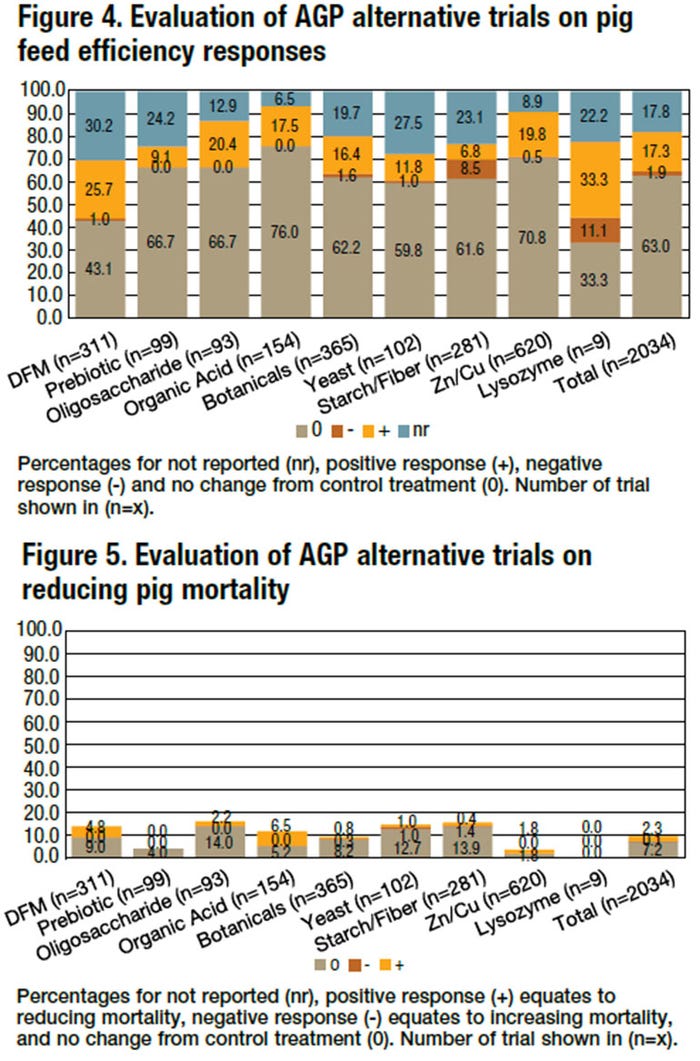
Altogether, this first stage of the project was to complete a literature review and build a database that will allow researchers and producers to better understand the variation associated with the use of published AGP alternative results in nursery pig diets. In the future, we hope to update and improve this database to provide more trial design and information to enable researchers and the allied industry to better design and evaluate AGP alternatives. There is still a need to understand the mechanisms of how sub-therapeutic growth promoting antibiotics improve growth performance so we can mimic these actions with alternative products.
You May Also Like

